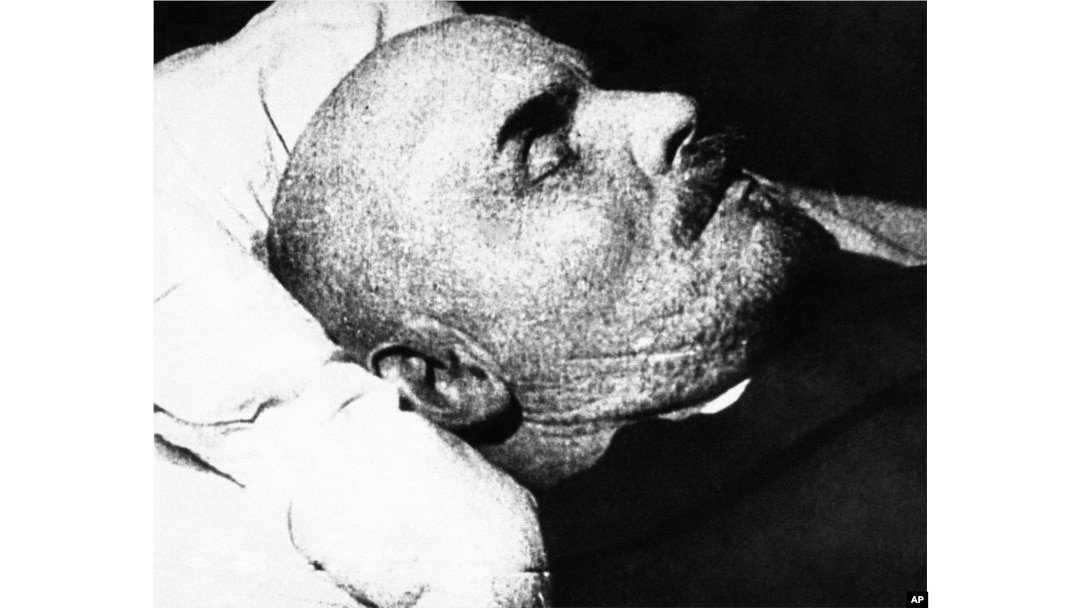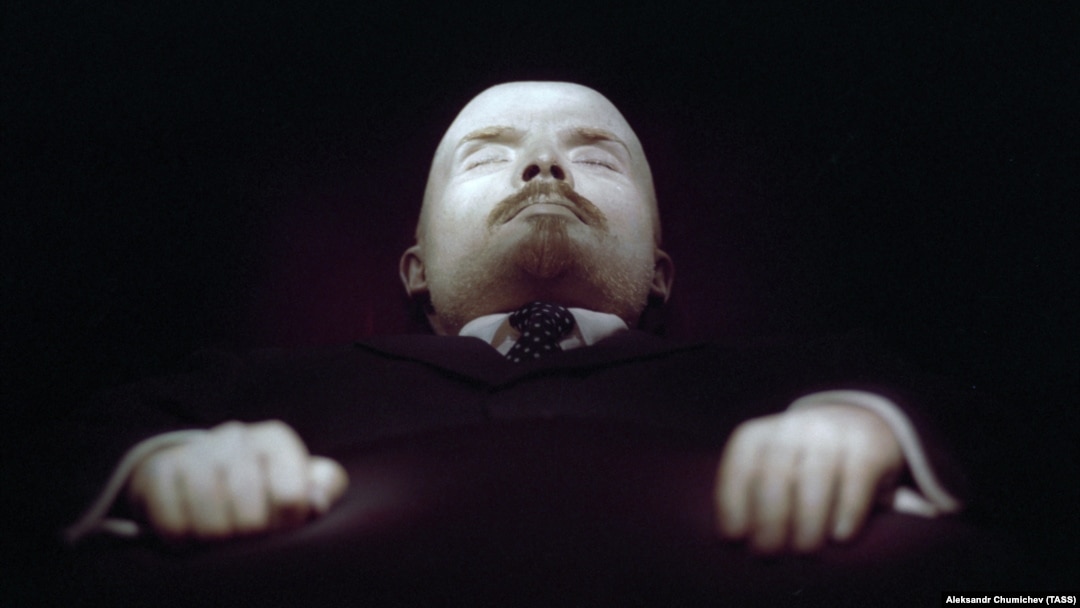Vietnam's communist government has formed a special council to assess the state of its most sacred icon: the corpse -- first embalmed by Soviet chemists and other forensic specialists a half-century ago -- of revolutionary leader Ho Chi Minh.
And it wants a hand from the Russians.
It's a return to the fold, of sorts, for Vietnam, but just another job for the inheritors of Soviet embalming efforts in the former Eastern Bloc and around the world.
So beginning next month, four Russian scientists will help the council "propose plans and scientific measures to preserve and protect the absolute safety of Chairman Ho Chi Minh's body for the long term," Reuters reported.
Soviet scientists have been at the center of the embalming universe since two chemists, Vladimir Vorobyov and Boris Zbarsky, stepped in to propose a chemical solution instead of the permanent freeze that Soviet officials were debating for nearly two months after the death of Soviet revolutionary leader Vladimir Lenin in 1924.
The results launched nearly a century of efforts to extend the corporeal and useful existence of dead leaders or other prominent figures in a handful of countries, almost all of them communist, around the world.
Since Lenin, Soviet embalmers have touted their work to preserve Bulgarian communist leader Giorgi Dimitrov (1949); Lenin's successor, Josef Stalin (1953); and North Korean father-and-successor-son duo Kim Il Sung (1994) and Kim Jong Il (2011).
Others have tried their hand at embalming for public display, too, including on communist leaders like Czechoslovak Klement Gottwald (1953) and China's Mao Zedong (1976).
It hasn't always been pretty.

Vladimir Lenin on his deathbed
Vladimir Lenin (1924)
Like almost all of the leaders on this list, Lenin never wanted to be mummified for display. He wanted to be buried.
But his death in the depth of a Russian winter that kept the corpse (and mourners) frozen appears to have helped convince Soviet officials that if a little exposure was cool, a lot was cooler.
After nearly two months of debate, experienced embalmers Vorobyov and Zbarsky began the process with the spring thaw approaching.
The result was historic and Lenin -- with only brief exceptions that include an extended relocation to Siberia during World War II because of the Nazi threat -- has been a must-see political and tourist attraction that keeps on giving even years after the fall of the Soviet Union.
The eerie sheen emanating from Lenin's skin and his waxlike appearance are due to the use of a moldable material made of paraffin and other materials that has replaced much of his skin fat.
The mausoleum of Giorgi Dimitrov in Sofia, which was demolished in 1999
Giorgi Dimitrov (1949)
Georgi Dimitrov
Speculation was rife of an assassination after the seemingly spry Bulgarian communist leader Dimitrov died suddenly at a Moscow health resort in July 1949.
Such talk accelerated when the Bulgarian government managed to construct a hulking mausoleum in downtown Sofia in less than a week.
Since his corpse was already in Soviet hands, "Lenin Lab" embalmers moved quickly to prepare the body for a display that continued until 1990, after the fall of the Berlin Wall signaled the imminent end of one-party rule in Eastern Europe.
His preserved corpse was then buried at the Central Cemetery in Sofia.
But the Giorgi Dimitrov Mausoleum stubbornly remained standing until its demolition in 1999, when Dimitrov's remains were cremated and his ashes reinterred.
The funeral service for Josef Stalin on March 6, 1953
Josef Stalin (1953)
Stalin's death in 1953 was shrouded in days of mystery and longer-lasting suspicion of foul play rather than the official cause of death due to a cerebral hemorrhage.
But as potential successors jockeyed for power, his funeral and related events -- a spectacle that drew hundreds of thousands of people in Moscow -- gave way to the display of Stalin's corpse next to that of Lenin in Lenin's Mausoleum in Red Square.
By this point, Soviet embalmers had trained up on Lenin and Dimitrov, and the corpse seemed to hold up well.
It remained there until de-Stalinization took sufficient hold in 1961 and the former Soviet dictator's body was moved and buried in the necropolis of communist and Soviet "heroes" along the eastern side of the Kremlin Wall.
North Vietnamese leaders stand around the body of President Ho Chi Minh on September 7, 1969.
Ho Chi Minh (1969)
Soviet scientists from the "Lenin Lab" -- a group of hundreds of specialists in its heyday -- were recruited to embalm Ho after his death at the height of the Vietnam War in 1969.
The decision contravened Ho's express wishes to be cremated and his ashes spread in several regions of the country.
But his glass-encased cadaver was on display in a Soviet-built mausoleum in Hanoi by 1975.
It remains a major draw for foreign and domestic tourists in the capital, and a powerful symbol of national independence.
But it takes a good bit of science, funding, and regular re-embalming to keep up those appearances.
The Soviets always maintained secrecy in the process, even among its own. ("Junior specialists -- like I was at the time -- weren't told any of the specifics," an embalmer who worked on Ho for a decade told The Moscow Times.)
But Russia's demand for service charges for Ho's upkeep and the related formaldehyde cocktails after the Soviet Union broke up reportedly prompted Vietnamese officials to try to learn Russia's embalming tricks for itself. Hanoi sent scientists to study in Moscow and even inspected the chemicals left behind after Ho's re-embalming sessions for precious clues to the process, according to a museum account quoted by Reuters.
The special council of experts marks an acknowledgement that whatever they've been doing to Ho Chi Minh lately, the Vietnamese recognize the need for greater Russian assistance.
The funeral of Klement Gottwald in March 1953
Klement Gottwald (1953)
The real cautionary tale of glorifying the embalmed remains of communist leaders lies in the story of the Czechoslovak who helped Bolshevize his Central European country's Communist Party and encouraged its alignment with Moscow's foreign policy aims.
Stalin's demise had proved too much for the former Czechoslovak exile to the U.S.S.R. who returned to help carry out a communist coup d'etat at home. Five days after attending Stalin's funeral in 1953, an ailing 56-year-old Gottwald reportedly suffered a burst artery and died.
But with the "Lenin Lab" apparently busy cleaning up their own autocrat, Czechoslovak scientists had to give it their best shot.
There are conflicting reports but anecdotal evidence to suggest that within a decade of being put on display at the Jan Zizka Monument in Prague, Gottwald's corpse was showing its age -- reportedly leaking fluids and taking on a black color.
"Like first-class representatives of the cult of personality in Czechoslovakia, they wanted to worship him like the Soviet Union worshiped Stalin. So they laid him out in the national monument in Vitkov and had him embalmed. But the embalming was just Czech; it was shoddy. His body very soon began to fall apart and gave the experts problems. So it's only a slight exaggeration to say that political necessity forced the medical experts to get rid of it," said Czech Jiri Pernes from the Czech Institute of Contemporary History.
Gottwald's corpse was eventually cremated in 1962 and his remains buried at Prague's Olsany Cemetery.
Party and state leaders stand vigil before the remains of Mao Zedong on September 13, 1976.
Mao Zedong (1976)
In death, the late architect of the Great Leap Forward and the Cultural Revolution seemingly fell victim to the Chinese-Soviet rivalry.
The embalming techniques honed from maintaining everlasting corporeal life for Lenin, Dimitrov, Stalin, and Ho were still a tightly held secret when Chinese communist leader Mao Zedong died in 1976.
And the Soviets were not about to share their secrets with Beijing in order to celebrate Mao, whose deep mistrust of his Soviet contemporaries had helped bring the countries to the brink of war less than a decade earlier.
So the Chinese scientists did their best to preserve Mao's corpse and entomb it in glass (another Soviet secret) for adoring masses to see.
The result was said to be a mess.
Mao's face and features were misshapen, his torso bloated so that minders had to loosen his clothing to keep it from popping its seams.
"I hear the body's in terrible shape," a Lenin embalmer was recently quoted as saying. "They did very bad work."


